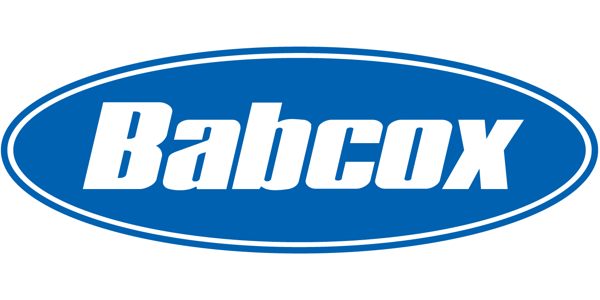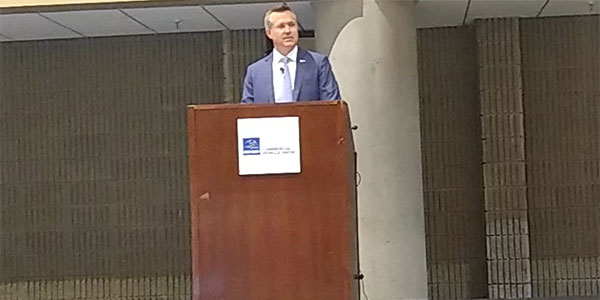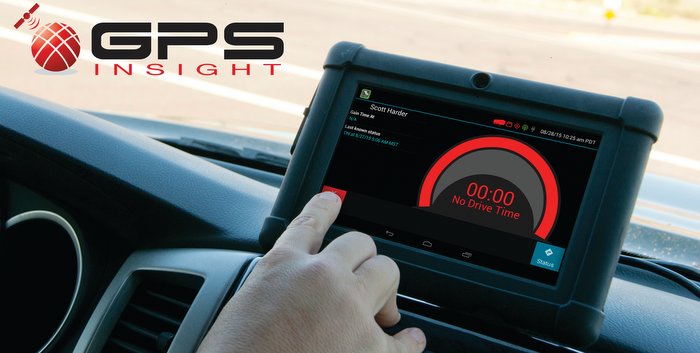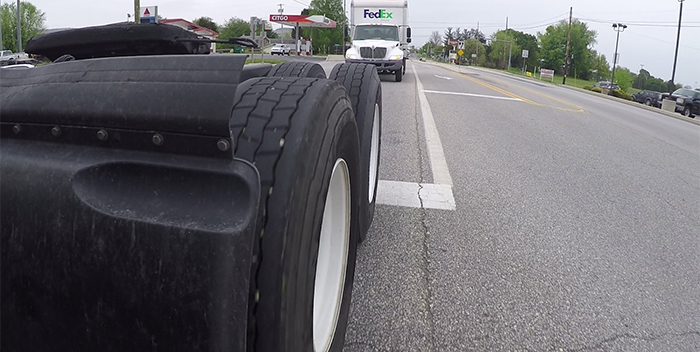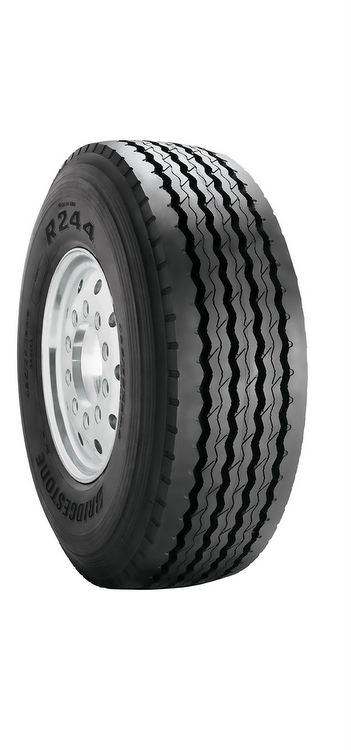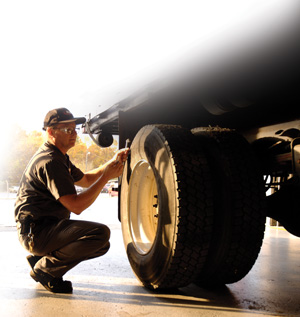 Some fleets turn over their entire tire maintenance program to their supplier/dealer; others choose portions of the maintenance to be handled outside the shop. Whatever the arrangements, getting the most out of tire dollars is the prime objective.
Some fleets turn over their entire tire maintenance program to their supplier/dealer; others choose portions of the maintenance to be handled outside the shop. Whatever the arrangements, getting the most out of tire dollars is the prime objective.
Building the right program
With a fleet of 100 tractors (80 company-owned and 20 owner-operators), Marvin Keller Trucking has run a successful regional trucking operation since 1965. The Sullivan, Ill.-based company hauls general consumer goods with an all dry-van fleet of Wabash DuraPlate trailers, with the majority of its deliveries east of the Rockies. The fleet averages 11 million miles per year and high-tech is the company’s middle name.
While the fleet thrives in providing excellent service at a competitive rate, it must control its own costs in order to stay competitive. “We look for suppliers who share the same philosophy that we adhere to,” says Rick Ellis, who serves as vice president of the company. “They must provide value and reliability to our company.”
When it comes to its tire program, Ellis feels they’ve made great strides in a new program with Goodyear. “When we had a change in management in our maintenance facility, we decided to start with a clean slate when it came to our tire program,” says Ellis. “We invited all the major tire players to come in and give us presentations on their tires and services. Goodyear stood out and the fleetHQ program really separated the company from its competitors.”
According to Ellis, Marvin Keller Trucking had experienced 28 flats over a six-month period and the associated costs, coupled with downtime, was playing havoc with budgeting. “Since our previous tire supplier didn’t have an over-the-road tire program, we had to find a service on our own and we paid a fee every time we used that service,” says Ellis. “Then the prices we were paying for tires were not always consistent – we constantly had to review pricing. Plus, about 25% of the time we were getting replacement tires that did not match up with our specs. So, when the units came back in, we had to pull the tires and save them for later use.”
Through fleetHQ, the company says it does not have to worry about inflated pricing—what it pays at home for tires through its local dealer, Gem City Tire in Champaign, Ill., is what it pays for tires on the road. And the fleet is billed by Gem City to streamline accounting and tracking. “What’s more, we’re now getting the tires we want, versus what’s available. And we don’t have to pay a fee when we call fleetHQ. That’s saving us a substantial amount of money. We’ve been very pleased with the turnaround time. Generally, our downtime is two hours or less,” says Ellis.
Prior to starting its tire program with Goodyear, the company instituted a tracking program to monitor tire and maintenance costs. “This way, we can test tires against each other and develop a tire program that is based on fact versus gut feel,” says Ellis. “Since tires are such a big expense for fleets, knowledge is power and it will help continue with a well-run tire program.”
A solid maintenance program helps the fleet keep tires running to their full potential. Drivers inspect tires on a daily basis and submit E-logs for pre- and post-trip reports. According to Ellis, the E-logs have allowed the company to achieve the highest level of compliance with hours of service regulations of the Federal Motor Carriers Safety Administration.
More thorough tire screening takes place every 10,000 miles as tractors and trailers are serviced at the company’s maintenance facility by five full-time technicians. Full PM services are conducted every 20,000 miles.
According to Nathan Boehm, lead mechanic for the fleet, every weekend, technicians take air pressure readings. Tractors are topped off to 105 PSI and trailers are gauged at 100 PSI. To help achieve uniform wear, steer tires are rotated side to side every three months, and the company plans to start rotating drive tires in the near future. Utilizing its own alignment machine, Marvin Keller Trucking aligns axles when any signs of irregular wear begin to show on tires. And, all new tractors that come into service—the company typically buys used International 9400s with around 400,000 miles on them—are aligned prior to going into service.
“Since we began the transformation of our tire program, we’ve really seen a decrease in our tire costs,” says Ellis. “We’re not quite done yet, and we’re looking at other technology to help our tire program—like Goodyear’s trailer tire with DuraSeal.”
DuraSeal Technology is a gel-like, solvent-free compound built into the inner liner of the tire. It can instantly and consistently seal punctures up to ¼-in. in the tread area, without the need to repair the tire until it is retreaded. This allows drivers to continue operating after a tire is punctured. (It does not seal sidewall punctures.)
“All told, we’re on track and we’ve been very pleased with the results of our tire program,” concludes Ellis. “It will only get better.”
Customer satisfaction
Scott Perry, group director of vehicle supply management for Ryder, says, “Ryder believes that having a comprehensive tire management discipline is crucial for containing costs and ensuring customer satisfaction. Good tire maintenance practices are especially important for Ryder’s service facilities that maintain a broad fleet mix of more than 186,000 vehicles and purchase more than 300,000 replacement tires a year. Ryder offers tire maintenance across its Fleet Management Solutions business, which includes its full-service lease, rental, and contract maintenance services.”
Ryder has billions of miles of experience with tire performance that has been tested in real world conditions, according to Perry. “This information has helped us develop a Tire Matrix by application that allow us to provide the best wear rates and tire operating costs. Our Tire Matrix provides us with the knowledge required to adapt to any changes that may occur in our customers’ delivery model over the life of the vehicles. The Matrix is also used by our strategic partners—the best original and retread manufacturers in the industry—to help them understand our fleet mix, which ranges from light-duty up through medium- and heavy-duty vehicles (trucks, tractors and trailers). The Matrix permeates through every aspect of Ryder’s tire maintenance program, identifying inventory needs by location and upcoming demand for managing casing inventory, as used tires flow back through the retread network. In fact, we constantly consult with those partners to identify opportunities for improved tread designs and compounds to deliver the best performing tires for our customers.”
Maintaining proper tire inflation is the single most important aspect of extending tire life. At Ryder, Perry says the company “tries to touch every vehicle as many times as possible whenever it is in our control to verify proper tire inflation.”
Ryder also has strict standards for the mounting of its tires, Perry says, which are delivered by the fleet’s partners fully assembled and mounted and are installed at Ryder’s own maintenance facilities. “Our service facilities follow the proper installation protocol to ensure a good bead seat, which will allow full yield and performance. This helps eliminate driver complaints of steering movements, thus giving them a safer truck to operate and a satisfied lease or rental experience with Ryder.”
No matter the size of the fleet, having strict disciplines around tire maintenance will result in cost-savings, fleet uptime and customer satisfaction.
TA & Petro provide tire service
We asked TravelCenters of America and Petro:Lube Truck Service Networks to outline its tire maintenance services for fleets. Here is what the company provided:
Q. How do you develop tire maintenance outsourcing plans with fleet customers?
A. As an over-the-road service provider, our primary focus is to provide in-bay and roadside emergency tire replacement for our Tire Vendor Partner national account fleet customers, non-national account fleets and owner operators. We have a team of fleet maintenance representatives that work directly with fleets to ensure we understand their requirements and provide the options they need. We also carry a full line of new tire brands, used tires and retreads.
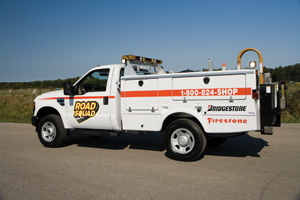
Q. What work is outsourced and how is it tracked and reported to the customer?
A. Customers look for us to provide new tire replacement, tire repair, balancing and vehicle alignment services, but also many other maintenance services. The tire vendor national account billing process provides the fleet with the purchase detail of each transaction. In addition, we can provide electronic copies of work orders and have the ability to interface with a fleet through eShop—a secure TA/Petro web portal that allows an emergency breakdown department to conduct real-time transactions without picking up the phone.
Q. Do outsourcing tire maintenance plans include road calls?
A. Yes they do, because tire failures are the number one reason for a roadside breakdown, regardless of the time of year.
Q. What does a typical service plan include?
A. It includes an understanding of the fleet’s written purchase policy for its new tire replacement preference, when to repair vs. replace, air pressure requirements by wheel position and valve stem requirements. Casing trade-in values are also an important component of the tire replacement process.
Q. What should fleet maintenance managers look for in a good tire outsourcing maintenance partner?
A. For over-the-road emergency tire replacement, a supplier should provide both roadside breakdown service as well as in-bay service 24/7/365, provide new tire brand options, retreads, proper repair and the ability to get a customer’s truck back on the road safely and on time. They should be reputable, have TIA trained employees and be sensitive to the time demands of the fleet and the driver, which is especially important with the Hours of Service and new CSA2010 rules.
With a network of over 230 truck service centers in 41 states and Canada, TA Truck Service and Petro:Lube offers a large footprint of geographic locations with nearly 1,000 service bays and over 400 service trucks that are dispatched 24/7/365 by the highly qualified RoadSquad call center at 1-800-824-SHOP.
Bridgestone, Goodyear and Yokohama national tire accounts are accepted and professional service is provided by service writers and highly trained technicians.
Tire management program leads bus fleet to switch tire brands
Hagey Coach of Souderton, Pa., has changed tire brands in at least one instance based on the results of a fleet tire management application the company has been using for two years. Now the 190-vehicle fleet is using the same program to compare retreading companies.
Hagey Coach operates 20 motor coaches on charters across North America, as well as 170 school buses locally in Eastern Pennsylvania. The application Hagey uses is Dossier Tire Management, which works with Dossier maintenance management software. Dossier Tire Management was the first automated solution for managing all tires in a fleet regardless of brand.
“I’ve changed the way I buy between a certain two brands,” said Bob Nolen, fleet manager for Hagey. “I was buying one brand because we felt it was the best way to go. But with tire management I’m able to see that another brand tire is wearing as well and it costs us a little less.”
Beyond the change in tire buying preferences, Hagey is using Dossier Tire Management to analyze recapping companies. “We’re comparing Bandag, Michelin and Marangoni,” he said. “We’re working on getting stats on what’s most cost effective.”
Nolen said the system starts with a bar-code patch vulcanized to every tire. “Any tire that comes in the door gets a bar-code patch. When we send it out to get recapped, we’re able to track it and say how many times it has been capped, with what tread design and whose tread it is,” Nolen said.
At the same time, Nolen added, Hagey is using tire management to track brakes on the fleet. “Using a wheel as a position allows us to track our brake readings within the tire module. That gives us a brake maintenance history.”
Hagey has been using Dossier Tire Management since becoming a beta tester for the new module in late 2007.

